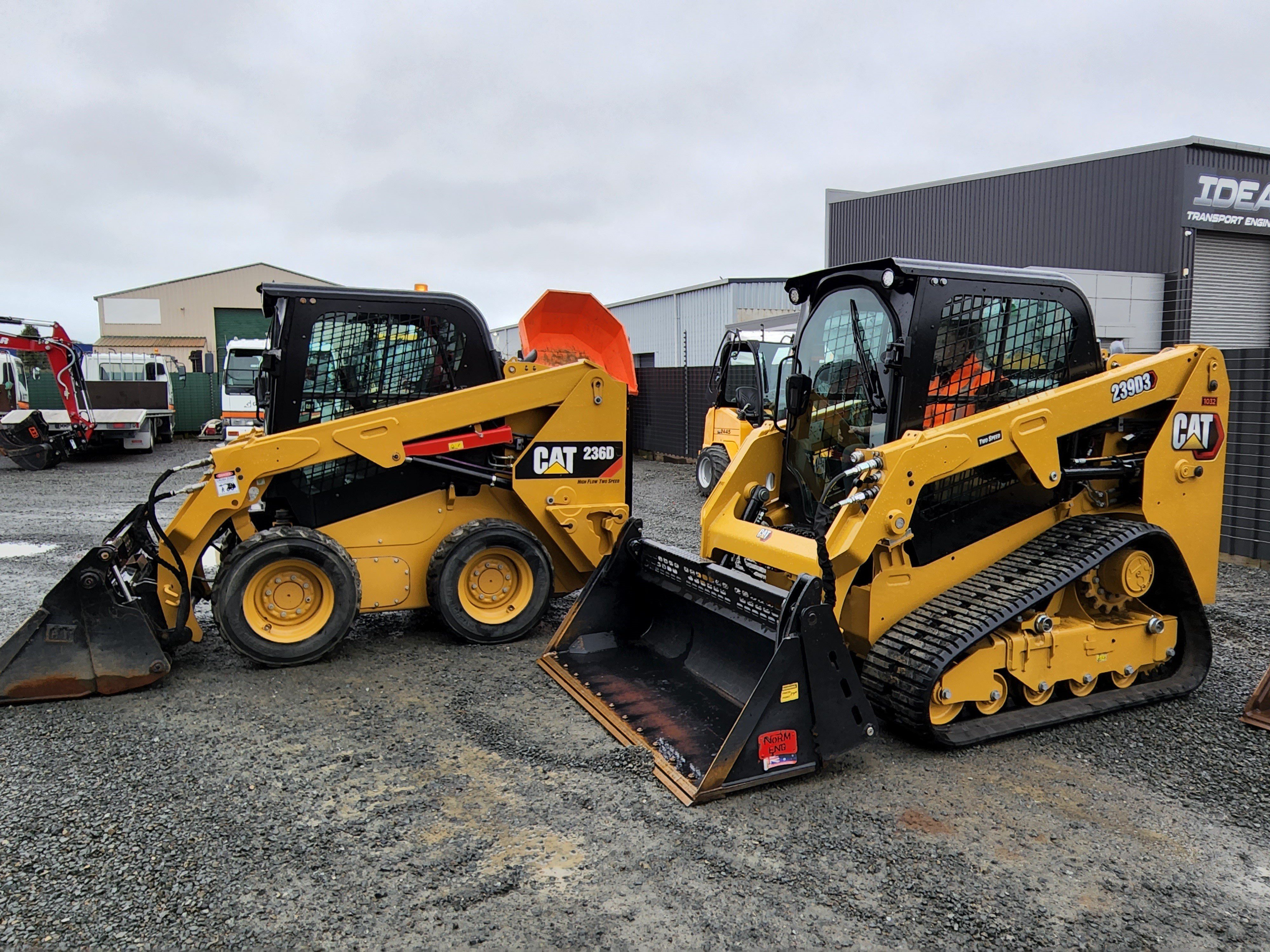Construction work is a demanding job that requires reliable and sophisticated construction equipment to assist with on-site tasks such as preparing and cleaning up work sites. Track loaders and skid steer loaders are valuable pieces of machinery used in construction today. Though both machines are loaders, they have some significant differences that offer unique benefits when handling construction tasks. It’s vital to understand what they are for you to come up with the best solution. Here’s what you need to know about track loaders and skid steers.
Track loader vs skid steers – what’s the difference?
Track loaders and skid steers are very similar and can perform similar tasks. They’re both capable of digging through soil and are responsible for sorting and moving materials like rock, snow, and sand. However, some differences make them unique. Skid steers are known for their compact size, making them ideal for tighter environments. On the other hand, track loaders are famous for their excellent track maneuverability, enabling them to travel easily on soft ground. Let’s compare the two types of machinery.
Skid steers have wheels, track loaders have tracks
Skid steer loaders operate on four wheels – two on the left and two on the right. While each set is independent of one another, they’re synchronised mechanically. These wheels are dragged across the surface of the ground. On the other hand, track loaders don’t have wheels but tracks. These tracks provide more traction as they cover a lot more ground. With tracks, operators can move the equipment over mud, snow, and other soft ground.
Skid steers move fast, track loaders are stable
Both types of machinery cover a lot of ground, but skid steers are known for their rapid movement and better maneuverability. Machine operators can drive them on concrete and pavement with zero-radius turning. And because they move faster, they do an excellent job for scrap, demolition, and roadwork. Meanwhile, track loaders are slower but are more stable. Because of their added stability, track loaders can perform many intensive tasks such as high-impact drilling. Their superior traction also makes track loaders an excellent choice for sites that have rough terrains. Track loaders are easier to operate and more ideal when dealing with delicate and soft grounds without getting stuck.
Skid steers exert more pressure, track loaders have more power
Skid steers have wheels that can exert more pressure on the ground, which helps to remove snow and perform ground compaction. These machines exert 30-35 pounds per square inch of ground pressure. On the other hand, track loaders only have a 4-6 PSI, but it boasts more horsepower and hydraulic flow. While heavy in size, track loaders can also carry greater loads.
Skid steers cost less compared to track loaders
A skid steer is less expensive than a compact wheel loader or similar-sized track loader. Maintenance is cheaper too. This is because tires from skid steers wear down at a slower pace, and they’re more affordable to replace than tracks from track loaders. But don’t worry! You can also lower the maintenance costs on track loaders by ensuring proper use and care. You can extend the life of your tracks by changing direction more slowly and using the appropriate tensions on the tracks.
Not sure which one you need? Let MetroHire help you decide!
Purchasing heavy construction equipment is an investment. It’s crucial to consider several factors when choosing between two machines. At MetroHire, we can help you make an informed decision to get the right machine to help you perform on-site tasks efficiently. We offer high-quality, versatile, and powerful track loaders, wheel loaders, and skid steer hire that allow you to do your tasks with maximum performance in the least amount of time. Don’t hesitate to contact us if you need more assistance on your track loader or skid steer purchase or rental.






